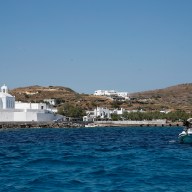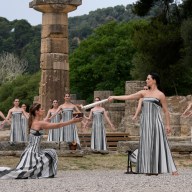 The front of the Statue of Liberty.
The front of the Statue of Liberty.
Credit: Timothy A. Clary/AFP/Getty Images
The Statue of Liberty has become a symbol of freedom and democracy for generations of Americans – but the idol was originally designed for Egypt.
In “Liberty’s Torch,” out on Wednesday, Elizabeth Mitchell chronicles the efforts of French artist Frederic Auguste Bartholdi to erect his colossal statue, from a failed concept on the Suez Canal to the icon’s 1886 dedication in New York harbor.
Mitchell tells us some of things most people would be surprised to know about Bartholdi’s statue.
10 things you probably didn’t know about the Statue of Liberty
1. The statue was originally designed for Egypt.
Bartholdi’s original concept of a colossal statue of a woman with a lantern was designed for the mouth of the Suez Canal, under construction in the late 1860s. When the deal feel through, Bartholdi was disappointed. Eventually, he adapted that design for America. “It had been a slave woman in the same kind of flowing dress,” Mitchell said. “She had a head piece but it wasn’t a crown.”
 Portrait of the Statue of Liberty sculptor Frederic Auguste Bartholdi in 1883.
Portrait of the Statue of Liberty sculptor Frederic Auguste Bartholdi in 1883.
Credit: Keystone-France/Gamma-Keystone via Getty Images
2. The statue was meant to be a lighthouse.
Though the statue was originally designed to be a lighthouse – and pitched to the American government as such – it wasn’t viewable in the harbor after sunset. Bartholdi suggested Americans gild the statue with gold, but no one followed through on the expensive proposal.
3. The designer wasn’t very enthusiastic about America.
When Bartholdi set out to erect the statue on America’s shores, he wasn’t incredibly enthusiastic about the country, writing to his mother that the American character is “hardly open to things of the imagination.” Given the statue is now an iconic symbol in America, “it’s ironic,” Mitchell said.
4. The statue was originally called “Liberty Enlightening the World.”
In 1875, Bartholdi and his associates formed the Franco-American Union as the fundraising arm for the project, dubbed “Liberty Enlightening the World.” The French would pay for the statue and the Americans would finance the pedestal and provide a location.
 Pedestal for Bartholdi’s Statue of Liberty on Bedloe’s Island, New York harbor, as drawn by W.P. Snyder for Harper’s Weekly in 1885.
Pedestal for Bartholdi’s Statue of Liberty on Bedloe’s Island, New York harbor, as drawn by W.P. Snyder for Harper’s Weekly in 1885.
Credit: W.P. Snyder, Harper’s Weekly/Wikimedia Commons
5. Fundraising for the statue – and the pedestal – took a decade.
“No one was very enthusiastic about the statue from the beginning,” Mitchell said. Fundraising began in 1975 and ended in 1885. Tickets were sold to climb atop the head, see various pieces of the statue and view the studio where it was created. After American politicians rejected funding the completion of the pedestal, Joseph Pulitzer began to help raise money for the project, eventually raising $100,000 from 120,000 donors. As part of Pulitzer’s drive, he pledged to print the name of every contributor in the New York World.
 The statue’s head on exhibit at the Paris World’s Fair, 1878.
The statue’s head on exhibit at the Paris World’s Fair, 1878.
Credit: Albert Fernique/Library of Congress/Wikimedia Commons
6. The statue was first assembled in France.
After getting help from designer and builder Gustave Eiffel, the statue was completed and formally presented to the U.S. ambassador to France on July 4, 1884, in Paris. The statue remained there until it began to be disassembled in 1885 for its passage to America.
7. The statue used to be a dark reddish brown.
Oxidation of the statue’s copper caused a green patina, which completely covered it by 1906. “They didn’t anticipate that at all,” Mitchell said. “It looks like they thought it was just going to turn a darker red.”
 The Statue of Liberty seen in 1905.
The Statue of Liberty seen in 1905.
Credit: Universal History Archive/UIG via Getty Images
8. The torch-bearing arm was in Madison Square Park for six years.
The piece was installed in the park in 1877 and remained there until 1882. Bartholdi hoped this would encourage donations to his project, but it didn’t help much. “He made the big mistake of not letting people climb up into it,” Mitchell said. “Pretty soon everyone was kind of bored of it.”
 View of the torch from the not-yet-completed Statue of Liberty at Madison Square Park.
View of the torch from the not-yet-completed Statue of Liberty at Madison Square Park.
Credit: FPG/Getty Images
 Unpacking the the Statue of Liberty’s upon delivery in June 17, 1885.
Unpacking the the Statue of Liberty’s upon delivery in June 17, 1885.
Credit: Tungsten/Wikimedia Commons
9. The statue almost drowned before getting to New York.
“When it was coming over from France it almost went down in a storm,” Mitchell said.A thousand-ton, three-masted vessel that could carry 800 tons brought the statue from France to America. The journey – normally three weeks – took 27 days.
10. At one point, pieces of the statue melted in the sun.
When the statue first arrived in New York in June 1885, the pedestal was incomplete so pieces of the it were left in 220 crates on what was then called Bedloe’s Island. “One of big issues was the sun over that summer,” Mitchell said. “The sun kind of beat down on the pieces of metal and they started to warp out of shape. Many of them had to be hammered back into shape.” The statue was eventually assembled and dedicated in October 1886.
 The inauguration of the Statue of Liberty in New York, 1886.
The inauguration of the Statue of Liberty in New York, 1886.
Credit: Hulton Archive/Getty Images
Follow Anna Sanders on Twitter @AnnaESanders













